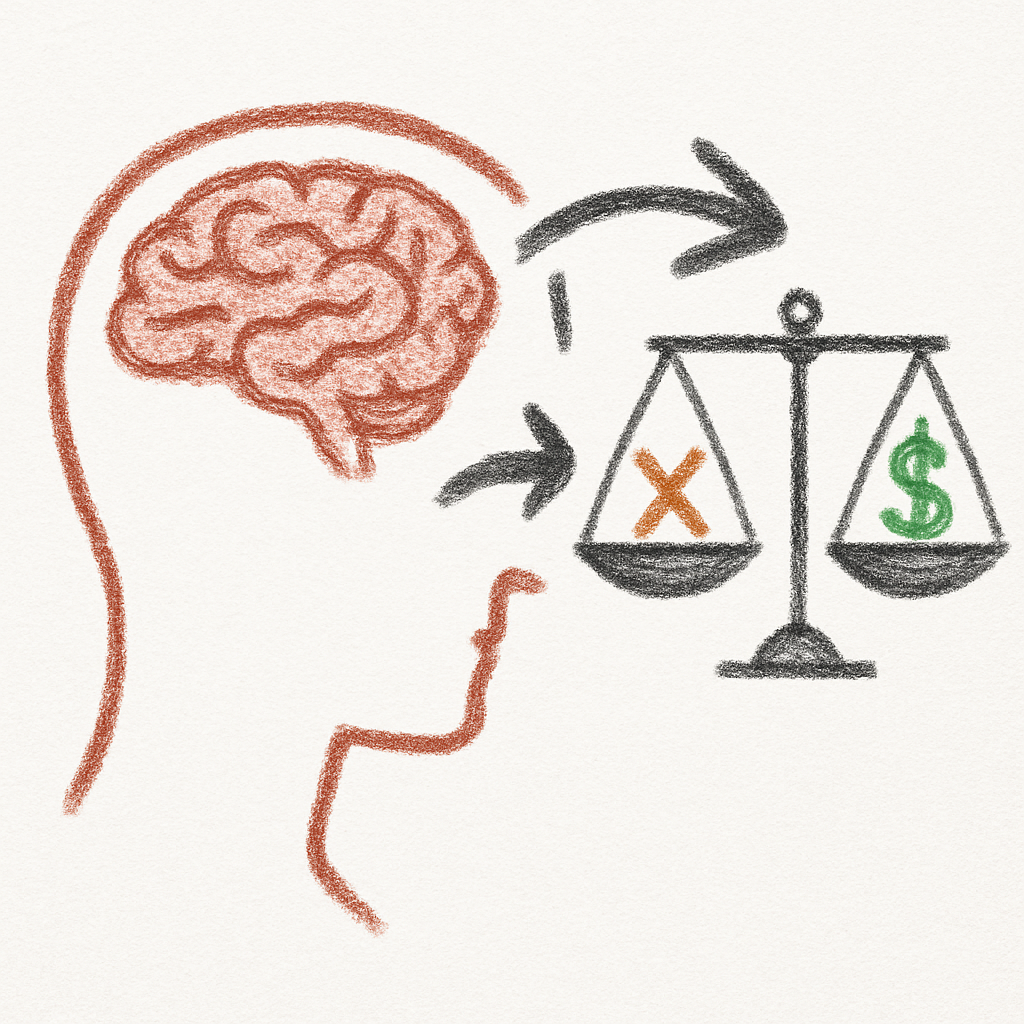“Tell me what you pay attention to, and I will tell you who you are.”
— José Ortega y Gasset
Executive Summary
Every decision is driven by how our brain calculates value—often without our awareness.
Our value system weighs choices based on past experience, present context, and future goals.
We favor what is familiar or identity-reinforcing, even if it’s misaligned with long-term growth.
Awareness of how these systems operate gives us a chance to intervene and shift our behaviors.
Small cognitive shifts can make future-oriented or more aligned choices feel immediately rewarding.
At every moment, we’re choosing. What to eat. What to say. Whether to send that email or go for a walk. We tend to believe our decisions are rational, but most are shaped below the surface—by unconscious patterns our brains have learned over time.
In her powerful new book What We Value: The Neuroscience of Choice and Change, neuroscientist Emily Falk explains how our brains assign value to different options. This value calculation—performed by a network of brain regions known as the value system—is the hidden engine of nearly every choice we make. We imagine we’re in control, but often, we’re just following what feels most familiar or comfortable.
For example, when Falk faced the decision to go for a run or finish work, her brain—already fatigued and influenced by context—chose the inbox. Her value system, shaped by identity (“I’m a dedicated researcher”), past outcomes (“I’ve been rewarded for answering emails”), and current fatigue, made the run seem less worthwhile. This choice wasn’t irrational—it was just automated by her brain’s algorithms.
But there’s hope. Falk shows that values aren’t static. They’re fluid and responsive. We can nudge our decisions by changing what we focus on. If we frame running not as a chore but as a chance to connect with a loved one or boost creative thinking, it starts to compete with the inbox. That’s not tricking the brain—it’s re-weighting the value calculation toward what we actually care about.
Recognizing the unconscious scaffolding of our decisions allows us to realign. We can pause and ask: “What am I really valuing in this moment? Is that aligned with who I want to become?”
As Falk says, “Understanding this can help us identify opportunities to change.” Decisions are not just about self-control. They’re about visibility. We can’t choose options that our brains never consider.
The first step toward change is getting more options on the radar.


